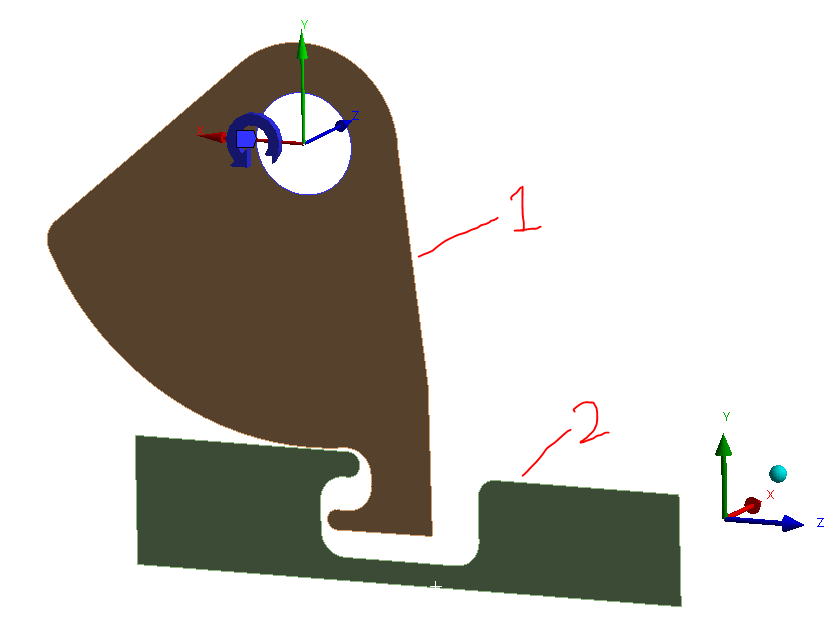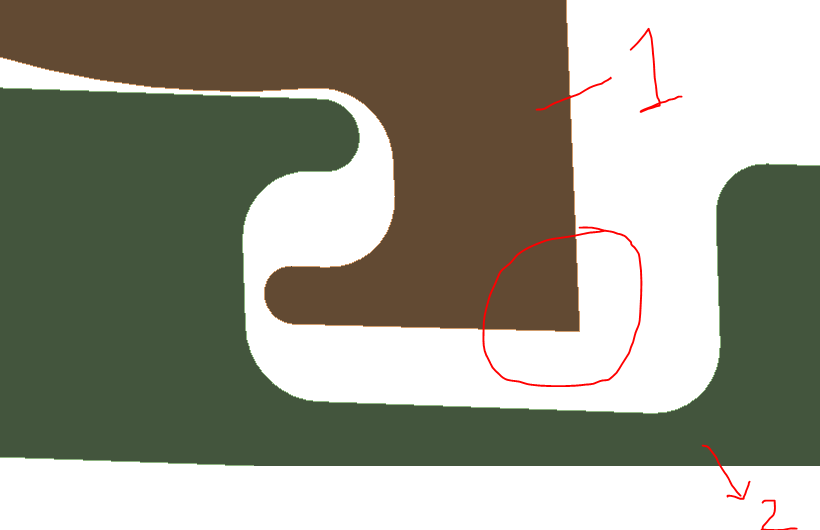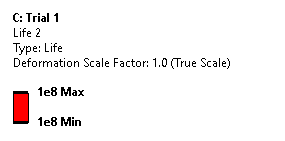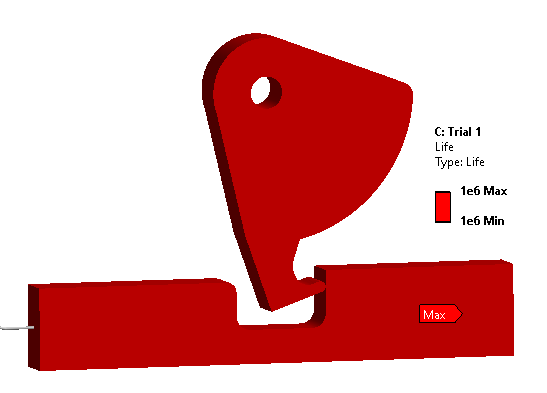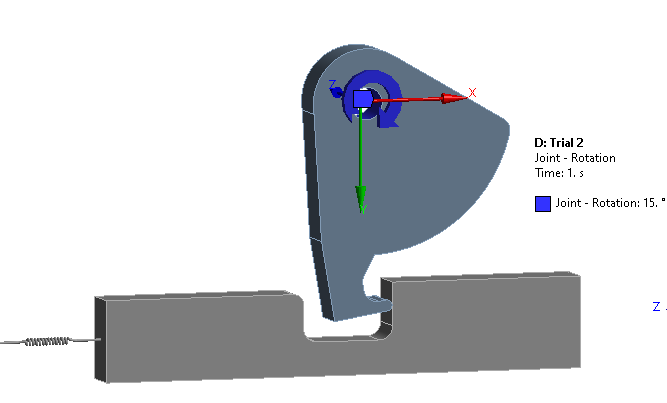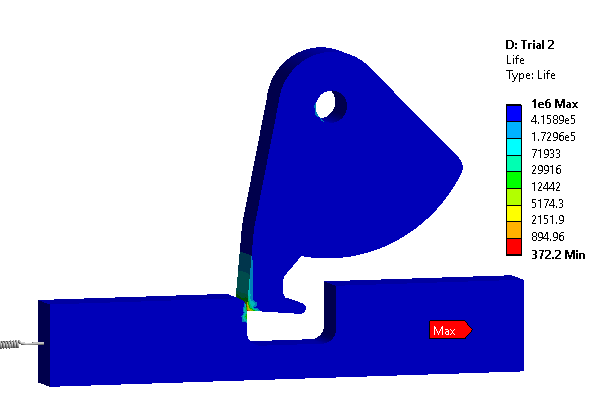-
-
August 26, 2022 at 1:47 pm
-
August 27, 2022 at 3:31 pm
peteroznewman
SubscriberANSYS includes the Archard Wear Model that can be applied to a Contact Defintion.
See this chapter in the ANSYS Mechanical APDL Help system.
-
August 29, 2022 at 12:13 pm
mkumar
SubscriberHello Peter,
Thanks for your reply. Below are the screenshots of the analysis I am working on. Component 1 will rotate about its axis back and forth like a pendulum. As it rotates back and forth , it will push and pull the component 2 . I am interested in finding out the wear at the sharp edge of component 1. Whether the Archard wear model will be suitable for this case? Here it is more of an impact than sliding wear. i have to simulate and estimate the wear after a few thousand cycles.
Thanks & Regards ,
Manoj
-
August 29, 2022 at 12:42 pm
peteroznewman
SubscriberHello Manoj
I believe the wear is calculated based on the contact force as the sliding occurs.
You will need a very fine mesh to have many elements along the sliding distance.
You might find the contact is more stable if you put a very small radius on the sharp corner.
-
August 29, 2022 at 1:09 pm
mkumar
SubscriberHello Peter,
Thank you for your input. I require additional assistance. To begin, I performed a static analysis and used the fatigue tool to determine the life.I was curious to find life at the sharp edge. I have solved it . I took the life plot, where it shows the life as 1e8 cycles throughout, but the von Mises stress is very high at the sharp edge . i used von Mises as stress component in fatigue tool.
i used structural steel properties ( Ansys engineering data) for this trial. It has both S-N and E-N curves.
Why am I getting 1 e8 cycles of life? Whether the fatigue tool will be suitable for this case is not clear.
Thanks & Regards,
Manoj
-
August 30, 2022 at 12:17 am
peteroznewman
SubscriberThere are a few ways to get a wrong answer from the Fatigue Tool. Instead, you should do it manually. Open Engineering Data, look at the stress-life data and find the cycles for the stress you measured.
-
August 30, 2022 at 1:34 pm
mkumar
SubscriberHello Peter,
Thanks again for the input. I did 2 trial fatigue analyses.
In the first trial, component 1 will rotate back and forth ( 2 steps), and as it rotates, it will push and pull component 2. i observed some stresses in the component, but in the fatigue tool, I am finding the component’s life to be infinite.
In the second trial, component 1 will rotate only in the clockwise direction. I observed some stress in this too, but now the fatigue tool is showing varying life across the component.
I don’t know why for one trial I am getting infinite life and for the other I am getting finite life. How to attach the workbench archive file in this post. I can share the workbench archive for this.
Thanks & Regards,
Manoj
-
August 30, 2022 at 4:08 pm
peteroznewman
SubscriberThis new site removed the ability to attach files to posts.
Take the .wbpz file and put it on a file sharing site such as Dropbox, Google Drive or Jumpshare, which is what I use, then post the link to the file in your reply.
I don't know why one Fatigue Tool gives you a plot and the other doesn't, but I don't use the Fatigue Tool much. As I suggested before, look up the minimum life manually.
Note that Fatigue life is different than a wear simulation. A wear simulation will actually move the nodes to show the amount of material lost over the cycles of sliding with a contact force present.
-
September 1, 2022 at 12:07 pm
mkumar
SubscriberYes, Peter, I am aware that wear is different from fatigue. Just to start with, I am doing a static analysis and checking fatigue .
Thanks, Peter, for all your insights. As per your suggestion, I will manually find out the fatigue life.
Please find the link for the workbench file : https://jmp.sh/V0spONa
Whenever you get time,check this attached workbench file, solve it, and let me know if you are observing the same (infinite life in fatigue) after solving it. Also, if you find something wrong , please notify me.
Thanks & Regards,
Manoj Kumar.M
-
- The topic ‘Simulate a mechanism and find out the wear rate ’ is closed to new replies.


- The legend values are not changing.
- LPBF Simulation of dissimilar materials in ANSYS mechanical (Thermal Transient)
- Convergence error in modal analysis
- APDL, memory, solid
- How to model a bimodular material in Mechanical
- Meaning of the error
- Simulate a fan on the end of shaft
- Real Life Example of a non-symmetric eigenvalue problem
- Nonlinear load cases combinations
- How can the results of Pressures and Motions for all elements be obtained?

-
4062
-
1487
-
1308
-
1156
-
1021

© 2025 Copyright ANSYS, Inc. All rights reserved.


